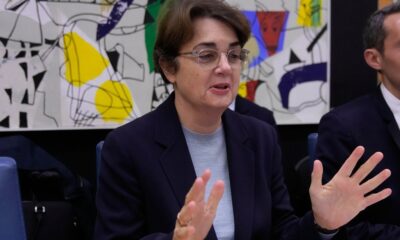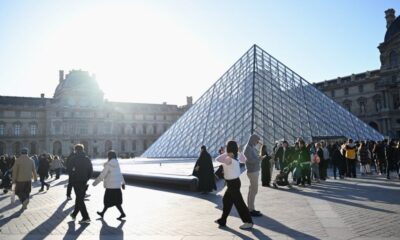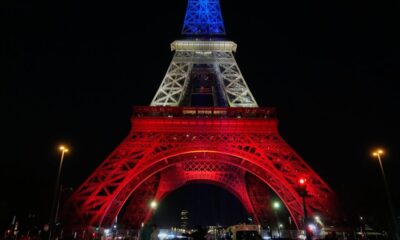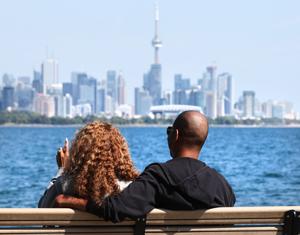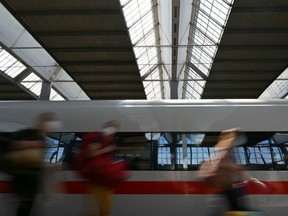Entertainment
Four Design Trends Reshaping Interiors: Embrace the Future
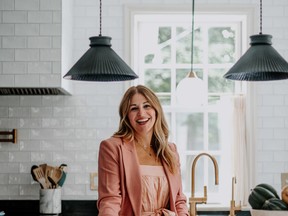
The annual report from consumer faucet brand Moen, titled Where Past Meets Future, highlights four significant design trends shaping the interior design landscape. These trends—creative expression, personal well-being, biophilic design, and future forward—emphasize a holistic approach to creating spaces that reflect individuality and environmental consciousness. The insights are drawn from major design exhibitions held in Milan and Paris, specifically Salone del Mobile and Maison & Objet, according to Danielle DeBoe Harper, a trend forecaster and creative strategist for Moen.
Creative Expression and Personal Well-Being
The first trend, creative expression, focuses on uniqueness and individuality in design. DeBoe Harper notes, “This is about differentiating yourself from others or expressing yourself,” pointing to the vibrant displays at the Milan lighting show, which featured statement lighting and innovative mirror designs. Traditional rectangular mirrors were notably absent, replaced by amorphic shapes, fabric upholstery, and illuminated features that reflect a desire for novelty.
The second trend, personal well-being, extends beyond mere physical comfort to encompass emotional and psychological aspects. This trend introduces elements such as chairs that transform into lounges and hyper-haptic surfaces, like high-pile rugs and textured fabrics. DeBoe Harper emphasizes the significance of calm interiors, which utilize soft color palettes and natural materials to foster harmony. Nostalgic designs are also making a comeback, with styles reminiscent of the 1920s art deco movement and the bold aesthetics of the 1970s and 1980s enjoying renewed popularity.
Biophilic Design and Future Forward
The third trend, biophilic design, speaks to humanity’s intrinsic connection to nature. Designers are increasingly incorporating earthy tones inspired by desert landscapes, such as browns, creams, and brick-reds. DeBoe Harper explains that these colors symbolize resilience and adaptability, encouraging individuals to create personal environments that reflect stability amid external turmoil. Additionally, references to water and oceanic themes are becoming prevalent, promoting tranquility through soothing color palettes and fluid shapes.
Lastly, the future forward trend recognizes the importance of sustainable practices while embracing futuristic aesthetics. This trend is characterized by the use of materials like stainless steel in kitchen designs and the incorporation of ocean-recycled plastics in furniture production. DeBoe Harper highlights how metals are being utilized in bold, unexpected ways, such as hammered chrome ceilings, while glass is reclaiming its spotlight in interior design.
As the design industry evolves, these four trends showcase a shift towards more personalized and environmentally conscious spaces. Designers are increasingly focused on creating environments that not only reflect individual styles but also promote well-being and sustainability, ensuring that the future of interior design is both innovative and mindful.
-

 Politics4 weeks ago
Politics4 weeks agoSecwepemc First Nation Seeks Aboriginal Title Over Kamloops Area
-

 World5 months ago
World5 months agoScientists Unearth Ancient Antarctic Ice to Unlock Climate Secrets
-

 Entertainment5 months ago
Entertainment5 months agoTrump and McCormick to Announce $70 Billion Energy Investments
-

 Science5 months ago
Science5 months agoFour Astronauts Return to Earth After International Space Station Mission
-

 Lifestyle5 months ago
Lifestyle5 months agoTransLink Launches Food Truck Program to Boost Revenue in Vancouver
-

 Technology3 months ago
Technology3 months agoApple Notes Enhances Functionality with Markdown Support in macOS 26
-

 Lifestyle3 months ago
Lifestyle3 months agoManitoba’s Burger Champion Shines Again Amid Dining Innovations
-

 Top Stories2 months ago
Top Stories2 months agoUrgent Update: Fatal Crash on Highway 99 Claims Life of Pitt Meadows Man
-

 Politics4 months ago
Politics4 months agoUkrainian Tennis Star Elina Svitolina Faces Death Threats Online
-

 Sports5 months ago
Sports5 months agoSearch Underway for Missing Hunter Amid Hokkaido Bear Emergency
-

 Politics5 months ago
Politics5 months agoCarney Engages First Nations Leaders at Development Law Summit
-

 Technology5 months ago
Technology5 months agoFrosthaven Launches Early Access on July 31, 2025

